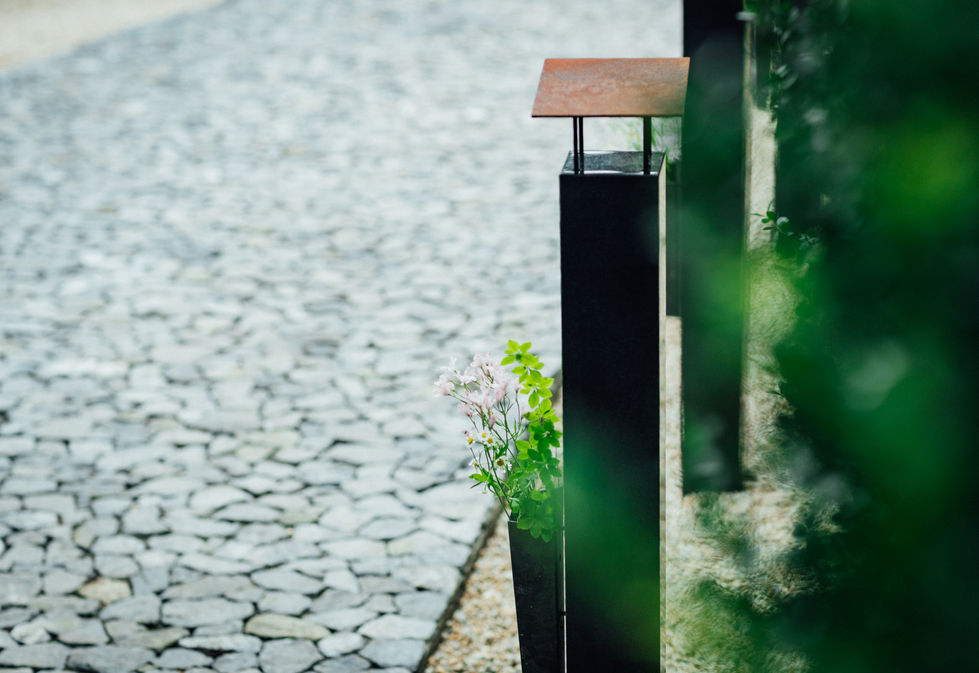Tengosan Myo-yuji Temple
Completed | July 2021
Size: Approx. 140m2
Address | Setagaya-ku, Tokyo Contents | Graveyard owner | Myoyuji Temple
Construction | Oikos Garden Planning Institute
Photo by Ippei Takayama
An open-air garden was planned in the garden of Myoyuji Temple, Karasuyama, Setagaya-ku, Tokyo, with three types of long, narrow headstones arranged in the image of lanterns. The garden was redeveloped as a rich garden by making use of existing trees and planting new plants and flowers that have been growing in Musashino for a long time. The headstones themselves, such as the ageing metal and stonework, are also given a delicate expression, and it is hoped that the cemetery will become a place where people can visit while thinking of the deceased in the midst of the changing times.
Who was the place for whom was the place to join hands in front of a gravestone?
There are not many places where people are allowed to think of the deceased, away from the hustle and bustle of everyday life, in order to accept the grief of losing a loved one. Cemeteries are still sought after in this day and age so that those left behind can look forward and live for tomorrow. However, the custom of visiting graves is fading, and the nature of cemeteries is being questioned more and more. In this context, through this project, we sought to find a way to create a cemetery in the town, rather than just a gravestone.
This was because we thought it was important to rethink not only the ritual of ‘visiting’, but also the experience of the entire space leading up to the visit. The gravestones were then considered to be appropriate for this ‘cemetery’, and to be like garden stones set in a garden.
The gravestones were rethought in line with the garden and integrated to form a unified landscape as a whole, with the aim of creating a space where visitors can walk slowly around as an open-air garden.
The number of craftsmen in Japan with an in-depth knowledge of stone processing and construction, not limited to headstones, has been decreasing in recent years.
The ‘ararekoboshi’ finishing technique, used on the Katsura Imperial Villa, is difficult to achieve in recent years because it requires special river stones and a high level of technical skill. The stone paving of the paths in this cemetery was carried out by a team of young and inexperienced craftsmen, led by a craftsman who had actually trained in Kyoto, using inexpensive and easily available ordinary crushed stones to achieve a finish similar to ‘arare-koboshi’. The work involved selecting the right shape for the pavement, resulting in an unprecedented stone pavement, albeit a time-consuming and labour-intensive process. The designers were also able to realise a wide variety of processing on a single stone, thanks to their frequent visits to stonemasons' workshops, where they rediscovered forgotten techniques such as the polishing machines and craftsmen's handiwork. In this way, by reorganising traditional Japanese techniques into a form that is easy to read and adopt in the current era, we hoped to provide one of the triggers for the transmission of the skills possessed by Japanese craftspeople.
























